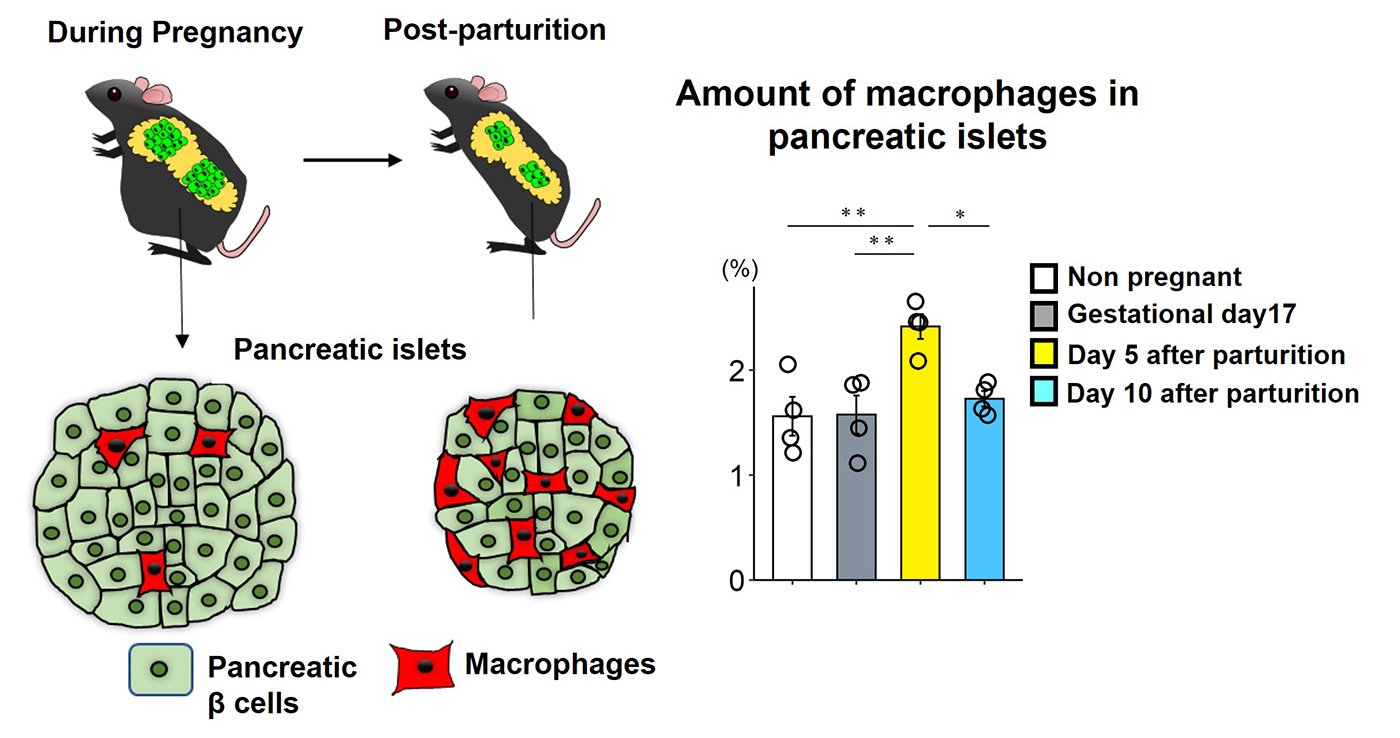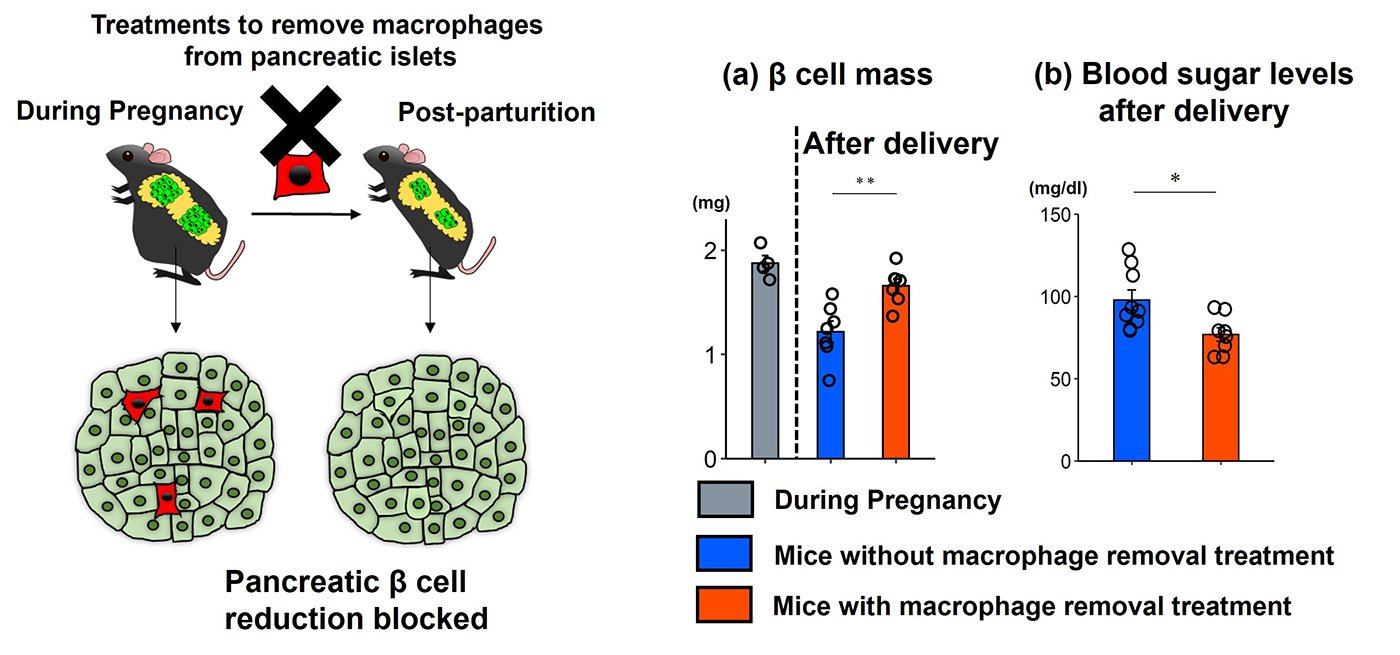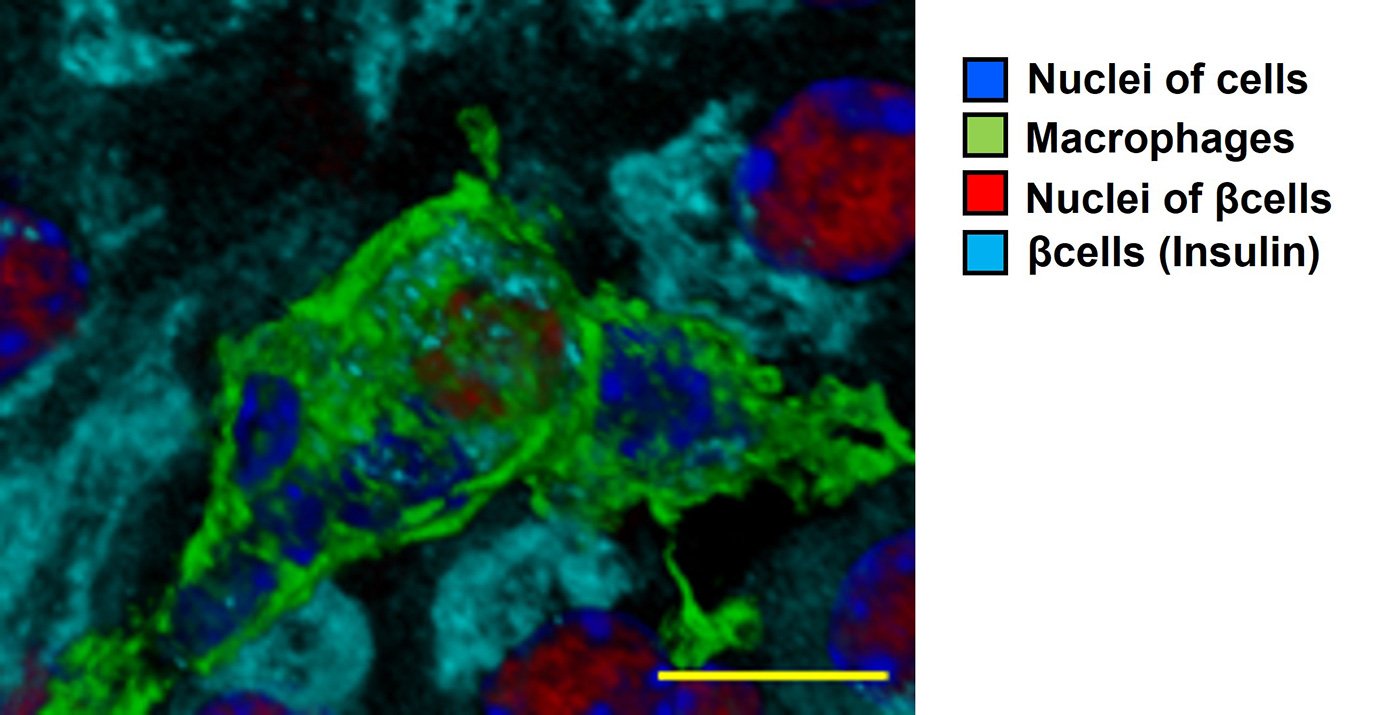Pancreatic beta cells (β-cells) reside in a cluster of cells in the pancreas known as the islets of Langerhans. Pancreatic β cells are the only cells that produce insulin - a hormone that decreases blood glucose levels. A decrease in pancreatic β cells is a major cause of diabetes.
Scientists have long known that pancreatic β cells increase during pregnancy and promptly return to their original number following birth. But scientists still do not understand the underlying mechanisms that cause the cells to go back to their original number.
In a significant breakthrough, a research group has discovered that a type of white blood cell called macrophages 'eat' (phagocytose) the pancreatic β cells, thereby revealing the process behind their return to previous levels after pregnancy.
The research group, which was led by Associate Professor Junta Imai, Assistant Professor Akira Endo, and Professor Hideki Katagiri from Tohoku University's Graduate School of Medicine, published the results in the journal Development Cell on September 15, 2023.
Initially, the group examined the number of pancreatic β cells in the islets of Langerhans in a mouse model of pregnancy. They confirmed the cell number was double at the end of the pregnancy when compared to non-pregnant mice, but that it then gradually decreased, returning to the original amount after delivery.

"After we observed the islets of Langerhans before and after delivery, we noticed an increase in macrophages, which protect the body from infections by engulfing bacteria, foreign substances and dead cells, after delivery," says Imai. "When we applied treatment to inhibit this process, the blood glucose levels became too low (hypoglycemia)."
Additional microscopic observation of the islets of Langerhans after birth revealed β cells to be phagocytosed by macrophages. This mechanism appeared to keep the mother's blood glucose levels from decreasing excessively after delivery by rapidly reducing pancreatic β cells to their normal pre-pregnancy number.

Next, the group identified the protein responsible for attracting the macrophages into the islets of Langerhans: cytokine CXCL10. Accordingly, the inhibition of CXCL10 function suppressed the decrease in pancreatic β cells after birth.
"We hope our results will contribute to clarifying the means by which normal blood glucose levels are maintained as well as the development of methods to prevent and treat diabetes," adds Imai.
The research was supported by the Japan Science and Technology Agency (JST) [Moonshot R&D] as well as by the Japan Agency for Medical Research and Development (AMED-PRIME).

- Publication Details:
Title: Phagocytosis by macrophages promotes pancreatic β cell mass reduction after parturition in mice
Authors: Akira Endo, Junta Imai*, Tomohito Izumi, Yohei Kawana, Hiroto Sugawara, Masato Kohata, Junro Seike, Haremaru Kubo, Hiroshi Komamura, Toshihiro Sato, Yoichiro Asai, Shinichiro Hosaka, Shinjiro Kodama, Kei Takahashi, Keizo Kaneko, and Hideki Katagiri
Journal: Developmental Cell






